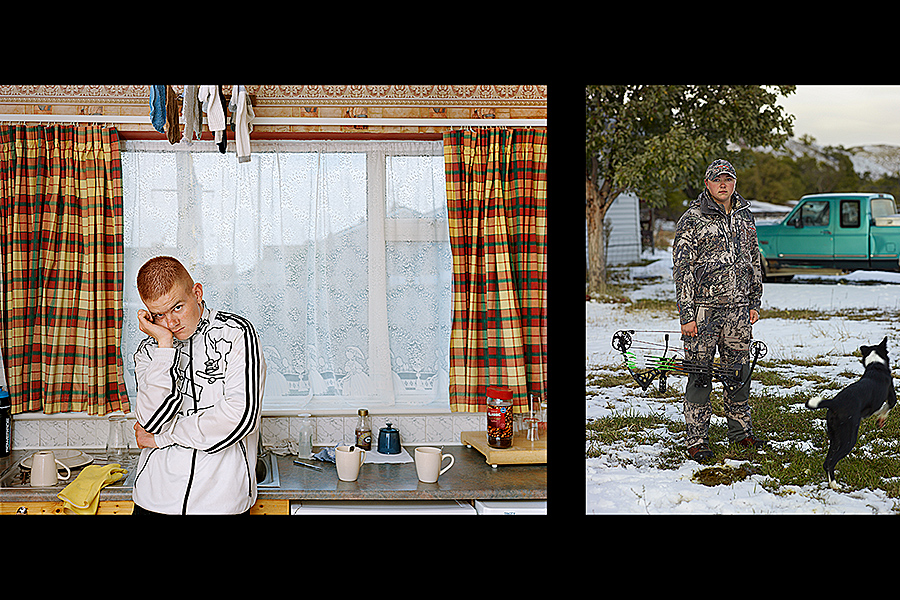'Dirt Meridian' and 'My Last Day at Seventeen'
Loading...
Looking for a photo book to review this year, I came across a pair that attracted me like a fly to a blue light. I tried to decide which one to do, but in the end I realized that they both deal with the same issue: a small group of people coping with their challenging environment.
In Dirt Meridian, photographer Andrew Moore uses an arbitrary device to define his subject matter. The 100th meridian divides the North American continent between the eastern half that gets enough annual rain to sustain agriculture and the western half that doesn’t. Moore travels along this meridian from North Dakota all the way south to Texas. This dry landscape is the protagonist of the book. The people seem to live in borrowed time. They mine, raise cattle, build homes, survive. But there is always a sense that nature will reclaim its domain.
In My Last Day at Seventeen, photographer Doug Dubois introduces us to a gang of youth in a small Irish town. Here too life is difficult. However, the environmental challenges are socio-economic.
Dubois's portrayal is beautifully intimate. These youth present themselves to him almost in a performance. It is hard to tell who is calling the shots. The result of this relationship is a collection of beautiful portraits which are loaded with symbolism. Each portrait is telling a personal story. In addition, there are several group images done around town that are seemingly orchestrated, and pages of a graphic novel that again reveal a rough narrative. (There is a rough feel to some of the book's text, extending all the way to an obscenity on its cover. But the strong language blends with the subject matter.)
The photography in "Dirt Meridian" also resides in that space between beauty and harshness. The aerial images are done when the sun is very low and from a low altitude, almost like a bird’s eye view. This technique brings up the texture on the surface. Trains, brush, pipelines, animals all seem to pop up from the land. The images done at ground level afford us a closer look at the people who live along the meridian. These photographs show decay but also convey a sense of resilience. These are not people who dwell in comfort. They bear the scars of living in a landscape that is always reclaiming what belongs to it.
At the end I did find a major difference between the two books. While Moore seem to be in perfect control of how he represents his subject in "Dirt Meridian," things are not as clear for Dubois in "My Last Day at Seventeen." Yes, he is taking the photos, but it seems clear to me that these tough kids are not relinquishing their own views of themselves for the sake of book fame. This is a collaboration with the best possible results.








